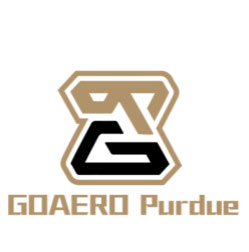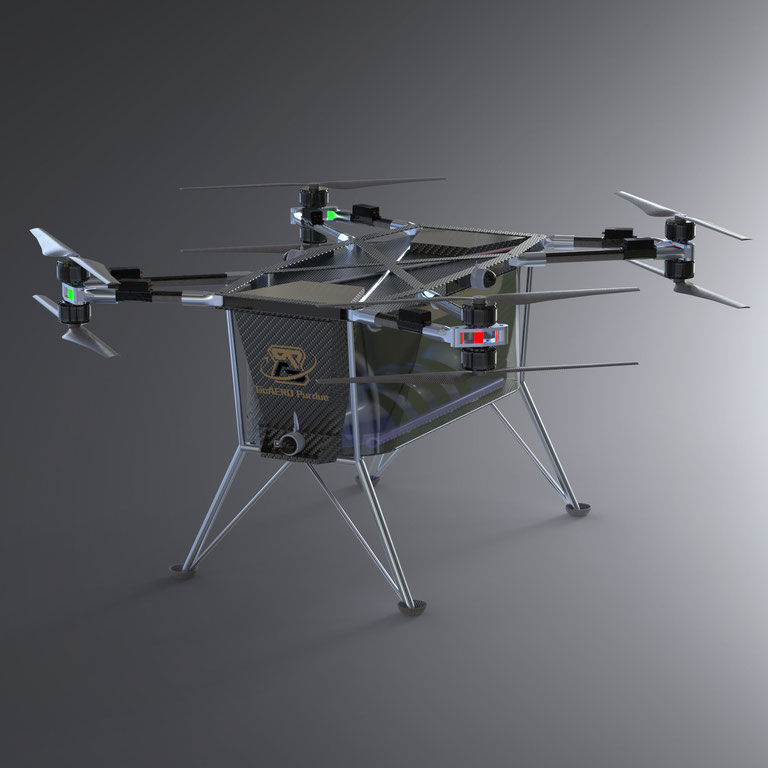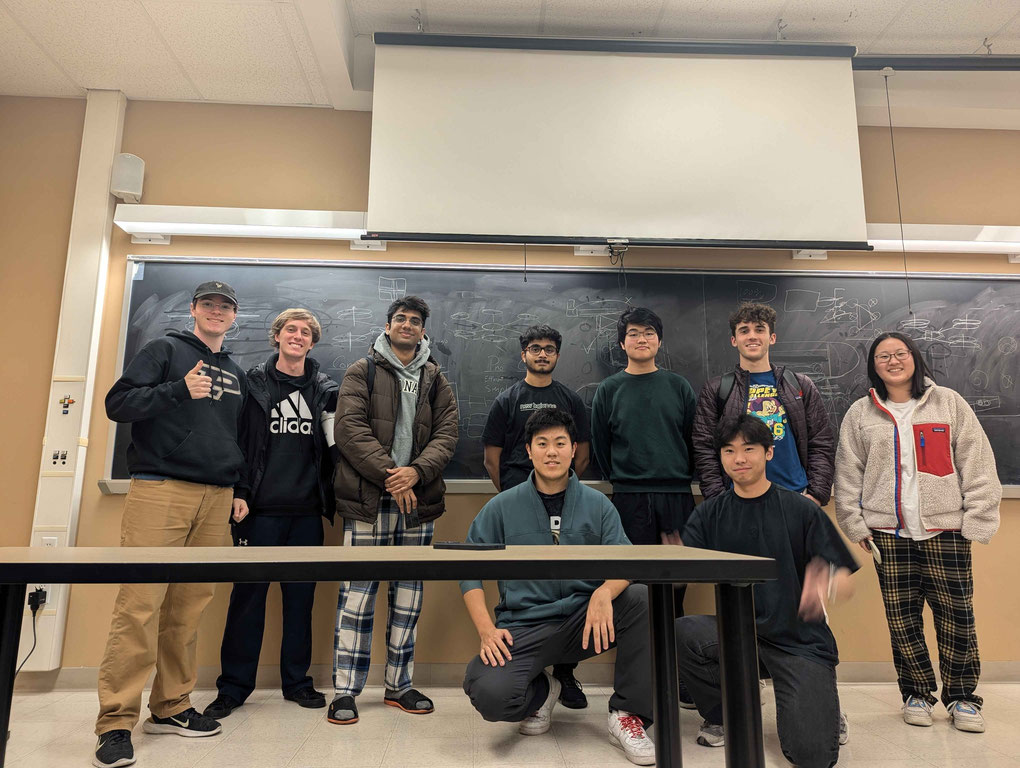US University Innovation Award Winner

Growing up in a densely populated city in Southern India, Siddarth Goel developed a real understanding and passion for urban air mobility. “The uses to me are infinite. In an emergency, an ambulance could be deadlocked in traffic for two hours just to go two kilometers during rush hour. It should take about 5 minutes. And this happens at least once a week, sometimes more. The solution is simple, to fly over the traffic.”
This is why Siddarth is so excited about participating in GoAERO, as captain of the Purdue University team in the global challenge to create a new class of emergency response flying vehicles that will be more effective and efficient than ambulances, helicopters, and drones during medical and extreme weather crises.
“I think GoAERO has catalyzed this particular use case of emergency response, not only in ambulance deserts, but also in urban settings,” says Siddarth, now a master’s degree candidate studying Aeronautical and Astronautical Engineering and focusing on Autonomy and Control at Purdue, from which he received his bachelor’s degree in 2024. “There are many air taxi companies, but hopefully, through this competition, we are able to demonstrate new technologies and introduce some companies working towards search and rescue.”
The 15-student Purdue University team hopes to do exactly that with its HEART (Human Emergency Aerial Rescue and Transport) flyer, a coaxial quadrotor eVTOL vehicle. Its primary design principles aim to provide door-to-door mobility for emergency operations and improve response time by focusing on factors such as operator workload, time of deployment, and storability.
“Our vision is that we will have a flyer that is super compact, super deployable and is kept at every fire station, every hospital, every police station, every emergency response house, the Coast Guard, and others,” Siddarth exclaims. “If they all had this in hand, they could pop in and pop out of emergency situations and do what was necessary in the short term. Especially in mobility-constrained environments, like dense urban zones, disaster-prone locations, forests, etc., we hope our flyer can act as a First Responder, providing critical intel, supplies, evacuation services, and executing precursor operations for large-scale emergency services as they are getting up and running and coordinating long-term responses.”
He cites the recent wildfires in California as an example, explaining that “sometimes, these mobilizations can take days and even weeks for large-scale response.”
The team received a major boost towards achieving its objectives by being selected as one of 14 U.S.-based university teams to receive funds from GoAERO with support from NASA’s University Innovation Project.

“This prize gives us some prestige,” Siddarth says. “It shows we are a serious team. And it provides us with leverage to raise funding from other sources towards our efforts in Stages 2 and 3, and obtain access to exclusive manufacturing, research, and flight test labs on campus.”
Siddarth relates that there wasn’t a particular “Aha” moment that drew him to aeronautical and aerospace engineering, although he notes that as a child, the first video game he received was Microsoft Flight Simulator, which “really got me hooked. From there, on every Lego set I built was something that flew.”
As for participating in GoAERO with its humanitarian mission, he says matter-of-factly: “It was just one of those things that was a no-brainer for me, I did not have to think long and hard when asked what I wanted to do.”
However, competing in such an endeavor is not easy and the team has faced challenges. He explains that he first heard about GoAERO when founder Gwen Lighter presented at Purdue. “I was paying out of pocket to learn more about industrial research and development, conferences, and publishing papers to prepare for graduate school.”
Intrigued by the GoAERO mission, he went to several department heads to ask for advice on how to proceed with forming a team, seek some initial funding, and recruit members. The initial response resulted in five students and the formation of a club team, with support from Purdue's Aeronautics and Astronautics department, which was very interested in competing in GoAERO.
Over the following months, those five diligently promoted the initiative, and the team was able to expand its roster. The overwhelming majority are undergraduates, unlike most other university teams, and not everyone on Purdue is an aerospace engineering major; some are majoring in business and other subjects which allows for a multitude of approaches and expertise.
Siddarth explains that when recruiting new members, the first and most important question asked of prospects was, ‘Can we see your resume?’ “We needed to see if they had the amount of time necessary to commit to this. The most valuable commodity to have is time.”
In addition to Siddarth, current team members are Valentino Cattaneo, Xuli You, Rithik Kurup, Anamano Ikoh, Aditya Godbole, Jack Karson, Alexander Udrys, Caden Kuang, Cole Vernon, Kanishk Israni, Yash Kheni, Jiekun Wu, Zerong Huang (Jason), Shaofeng Yuan, and Jiaji Zhang.

To a member, the team is participating in the GoAERO Prize to gain experience on solving real world problems through engineering. “We want to build expertise and skills for our members, while developing a product that contributes to society,” Siddarth says. “The challenge requires out-of-literature innovation, represents a unique opportunity for growth in academia, education, entrepreneurship, and spans multiple industries such as aviation, emergency services, electronics.”
The team has multiple mentors and role models who they can tap into for inspiration and guidance, including faculty advisors Thiago Guimarães, Associate Professor of Engineering Practice, Aeronautical and Astronautical Engineering; Woongkul Lee, Assistant Professor of Electrical and Computer Engineering, and Ran Dai, Associate Professor, Aeronautical and Astronautical Engineering.
“We have a unique relationship with our advisors,” Siddarth relates, noting that the team meets weekly and sometimes more often with them. “Our discussions are both at a very high level but also granular and technical; here’s the problem: how can we solve it. This is so important because many undergrads are still learning basic concepts in the classroom.”
Siddarth also points to the GoAERO webinars led by some of the world’s foremost experts in aerospace-related disciplines, from engineering to business, who he says offer “great starting points for introducing our members to the industry standard for each topic.”
Furthermore, he explains that the GoAERO challenge provides the team with “an exciting opportunity for us to get hands-on experience of moving a product through the entire design process and beyond. Usually, all this experience would not be easily accessible to undergrads. So, to get it on this scale this fast is fantastic.”
To highlight your GoAERO Team, contact us at info@goaeroprize.com.
REMINDER: Stage 2 Registration Documents are available here.
Benefits for Teams can be found here.
Team Summit: Let us know if you can join here.
